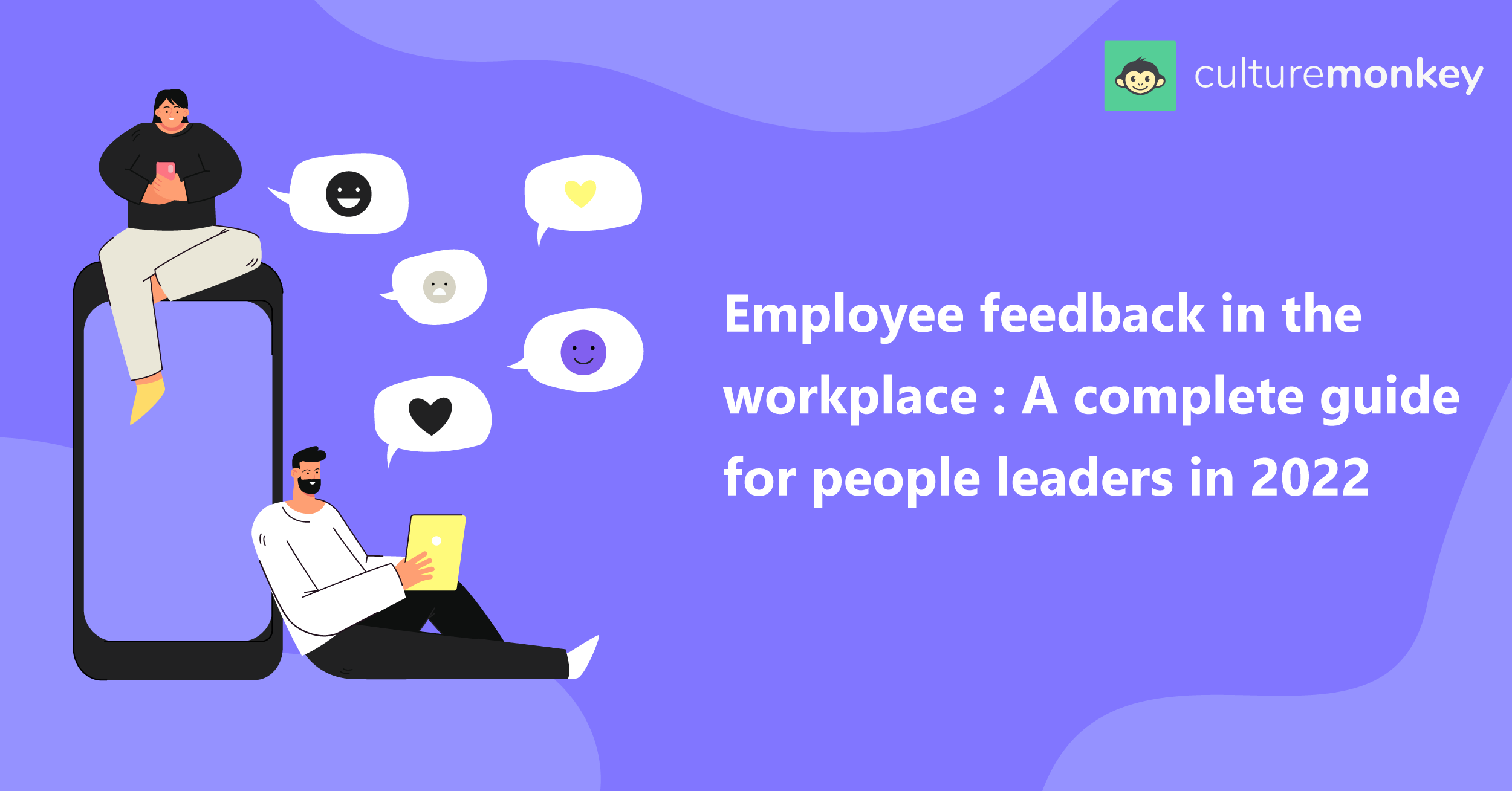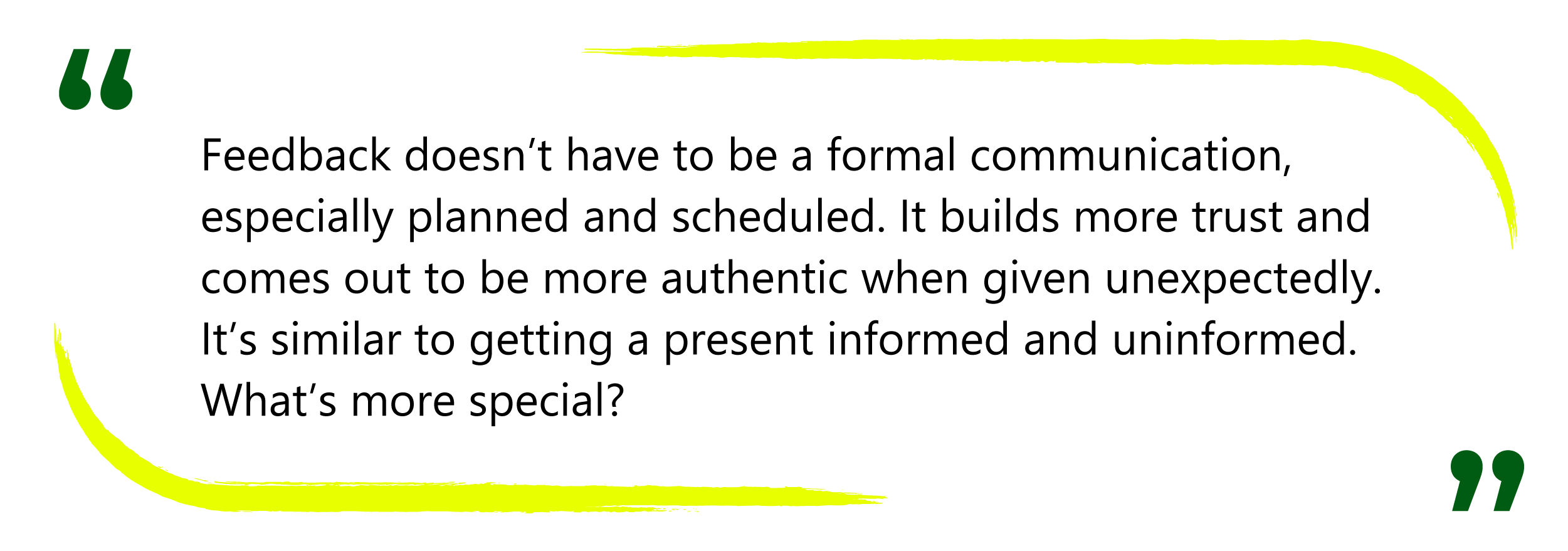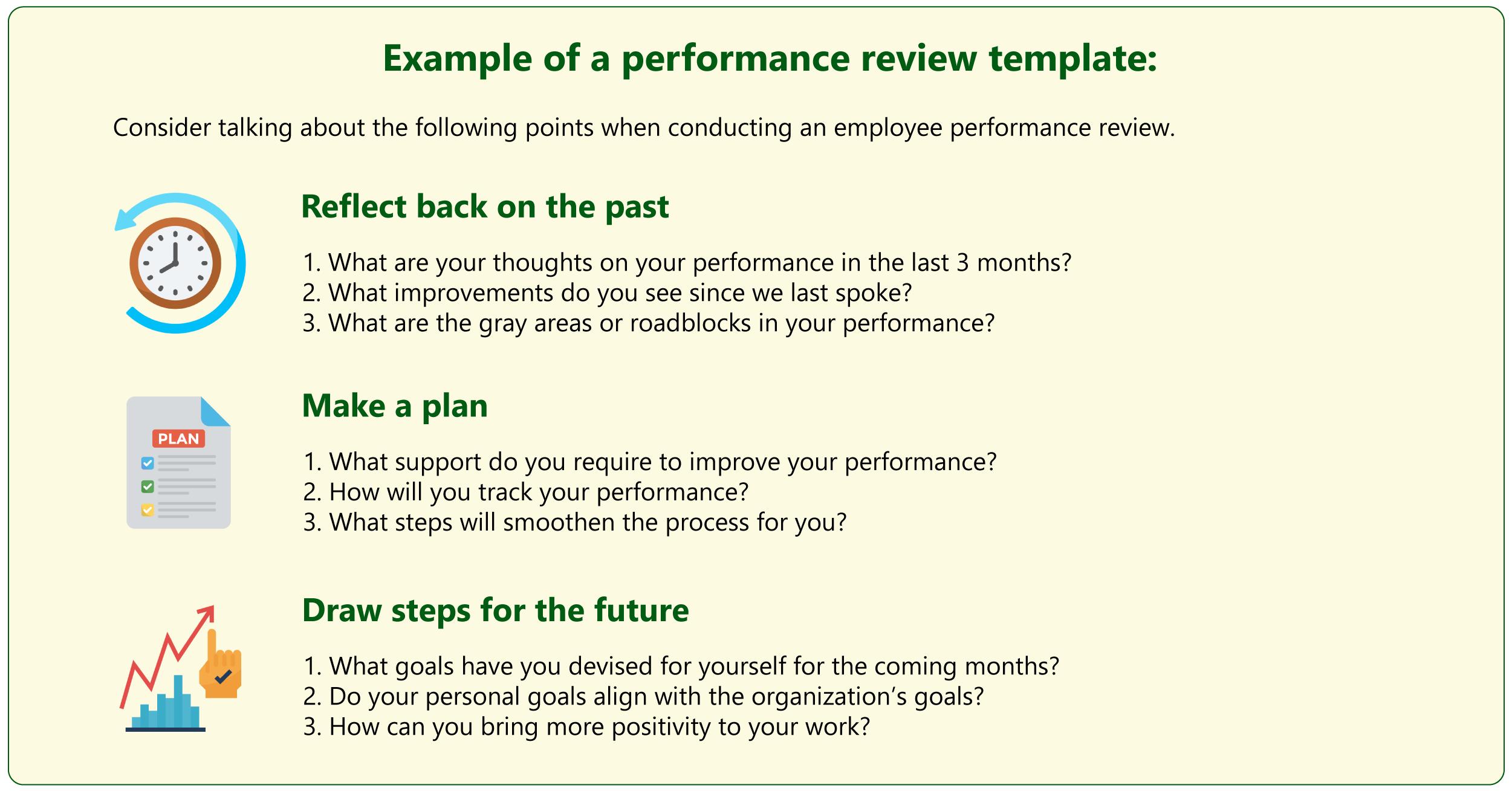Employee feedback in the workplace: A complete guide for people leaders in 2022

Have you wondered how well your company is keeping pace with the dynamically changing approaches to employee feedback management?
43% of highly engaged employees receive employee feedback at least once a week.
Receiving or giving constructive feedback from employees is the driving force for the growth of any organization. Long-lasting and strong relationships are built on effective communication. And to sustain a healthy partnership between an employee, a manager, and an organization, it all comes down to communicating, recognizing, and providing effective employee feedback to the team.
Employees giving feedback, especially the open-ended responses to survey questions, has been overlooked for years. Despite that, is it regarded as the best source for understanding not only your employees’ needs but their expectations as well? Absolutely yes! Gathering data, listening to employee feedback, and acting on it are key to engaging and retaining talent.
Are you still wondering what effective employee feedback is and why it is important for an organization's success? In this blog, we'll be talking in-depth about employee feedback and how it will empower employees and managers to constantly listen and help organizations in building a culture of continuous employee feedback. After all, isn’t communicating the linchpin of every successful business?
Table of contents:-
- What is employee feedback? Why is employee feedback important?
- Why is employee feedback important?
- What are the types of employee feedback?
- How to give employee feedback in the workplace?
- Employee feedback examples to manager examples
- Employee feedback surveys - Questions you need to know
- How can managers improve employee satisfaction with the employee feedback process?
- Performance review definition and importance
- Creating a culture of continuous employee feedback - Final thoughts
What is employee feedback? Why is employee feedback important?

Feedback is the transmission of evaluative or corrective information about an action, event, or process to the original or controlling source.
Simply put, any evaluative, positive, negative, or constructive criticism shared between an employer and an employee is called employee feedback. Employee feedback is a two-way mechanism. One may give and receive feedback to improve or enhance the work making the employees feel they are being heard.
If done in a correct manner, employee feedback culture can shape a better organizational ecosystem leading to high employee engagement and organizational values. The smoother the communication channel, the better the actions will be. Healthy and positive actions will eventually encourage and promote a culture of continuous employee feedback.
According to Forbes, four out of 10 workers are actively disengaged when they get little or no feedback. This proves the importance of employees to provide feedback in forming the employee experience.
As simple as it may sound, giving and receiving employee feedback is not easy. It is a comprehensively designed process because of the complexities involved in emotional beings called humans!
Why is employee feedback important?
When delivered empathetically, employee feedback culture has the capability to intensify the relationship between you and your people. Here are the top 5 reasons why employee feedback culture is important for you to shape a people-centric organization.
1. Reflection on performance:
Constant employee feedback improves performance as employees gain more clarity in their performance. This enables them to understand the areas that need improvement and the ones that are satisfactory.
2. Builds mutual trust:
A leader can create an environment of openness and trust, which changes how employees interact and discuss issues in a team. The process of effective employee feedback, giving or receiving, builds an acceptance towards the employee feedback and the perspectives of others, even when employees may not completely agree.
3. Empowers employees to do better:

Employees feel valued and appreciated with a two-way communication and employee feedback loop. According to Forbes, 74% of employees report they are more effective at their job when they feel heard. The feeling of being heard empowers them to perform better and excel in their own expectations.
4. Leads to business growth:
A high-performing and highly engaged employee will be more productive in building a positive environment in a company. If a company reviews employees constantly and provides constructive employee feedback, it’ll scale up sooner than expected.
5. Builds a strong company culture:
A strong company culture helps retain older employees and attracts new employees based on shared organizational values and job satisfaction. 9 out of 10 people are willing to earn less money to do more meaningful work.
Have you ever encountered an experience with an employee or a colleague where they say "Can I give you some feedback?" How did you feel at that moment? Tense, touchy, anxious?
Now, let’s try addressing it in a different way. How about asking your employee or colleague, "Can you give me some feedback?" Do you feel an emotional change?
A simple change from asking to giving can create a trusting atmosphere in which employee exchange feedback can processed effectively. A constructive or positive feedback environment can reduce employee turnover while driving highly engaged employees to yield more.
But, is it easy to create an organization's trusting employee feedback environment? It may seem like a task at the start, but a simple employee engagement tool like CultureMonkey can fix it all for you.
A tool that provides multiple features to record employee feedback and draw comprehensive actions through anonymous lifecycle surveys is all it takes to build a positive ecosystem. With this, your teams will be more willing to share their constructive feedback and openly talk about their problems.
Gallup's research shows that having conversations about development can improve employee engagement, which in turn improves productivity and profitability.
What are the types of employee feedback?
Employee feedback may not be just giving constructive feedback at all times. It can sound like the starting point for criticism which is not unfair. But on the contrary, a request for employee feedback can hit the right emotions in an employee making a shift to accepting and giving employee feedback in return.
There are two primary types of employee feedback that an employee and employer can exchange.
- Positive feedback
- Negative feedback
What is positive feedback?
While observing your employees’ work, it’s natural for managers to pinpoint errors when something goes wrong. But, a true artist is one who recognizes a job well done as much as they pinpoint a job done incorrectly. It’s extremely important for your employees to reflect back on their work through employee critical feedback from time to time.
Positive feedback basically highlights and acknowledges a job well done, drawing more attention to the person’s strengths and encouraging them to hold on to the same path.
When conveying positive feedback, try to be specific about your message. Help your employees understand the skills, actions, or gestures that generated the positive response, so they know how to keep it up. If possible, use sufficient data to back up your positive employee feedback examples.
It can be difficult for you as a leader to frame encouraging, significant, and positive feedback. If you are stuck in this loop of dilemma, don't worry. Go ahead, and read a few positive employee feedback examples. Here are a few positive employee feedback examples:
1. Appreciating hard work:
I really appreciate you walking that extra mile for me to finish the project. It’s all because of your effort that we could deliver it on time.
2. Recognizing a skill set:
Your peers are so fond of you, and they always mention how creative you are in team projects.
3. Mentioning past achievements:
You did exceptionally well in project A, which is why I would love to have your input on project B.
4. Admiring open communication:
I am glad you came up to me the other day to discuss all the blockers in your mind. Your encouraging and positive feedback has definitely helped me keep the entire team on the same page.
5. Addressing goals:
It's admirable to see that you have met your goals this month while helping your colleagues and maintaining the workload. You have set positive feedback examples for your subordinates.

What is negative employee feedback?
Negative employee feedback is simply corrective feedback that raises issues with employee behavior or performance and helps fix misaligned processes.
It can be difficult and challenging to handle negative feedback and unhelpful if it’s poorly delivered.
Surely, we all have received negative feedback in one form or the other. We would have had that type of conversation with our employers, which would have been unpleasant or disheartening.
But ironically, a Gallup poll identified that employees want any feedback over no feedback – even if it’s negative.
Keep in mind that one needs to be very specific while giving negative feedback. To avoid instigating the receiver, try to describe the context in detail and keep your language neutral. It is essential to position the employee feedback starter as a chance to talk and frame it in a constructive feedback manner to avoid triggering the receiver. Here are some negative and constructive employee feedback examples
1. Highlighting an issue:
Do you have a moment to talk? We could probably discuss what went wrong recently and work on ways to improve it for your personal growth.
2. Putting concerns on the front foot:
Convey your employee feedback in a concerning way. I’ve noticed you are finding teamwork a challenge. Is there anything I can do to help?
3. Noticing roadblocks:
I’ve noticed you’ve been staying in the office till late at night. I’m worried about your work-life balance. Can we dig in a little deeper to prioritize your projects?
4. Addressing misalignment:
Well done on the new assignment. I see you are facing some challenges. Can we discuss any support and training that may be helpful for smoother delivery?
5. Look at low attitude or morale:
I noticed you are very silent and disengaged in the meetings these days. Can we discuss how things are at your end so that we can try to improve them?

How to give employee feedback in the workplace?
How do we know our employee feedback is rightly analyzed? Or how do we know if we are delivering it the right way?
Without employees' constructive feedback and review, the organization remains in the dark. Employees behave in a way that they think is right while remaining ignorant of the possible mistakes they could be making.
A regular process of employee feedback could eliminate this issue. Delivering constructive or positive feedback from time to time can help employees enhance their best qualities. It tells them to keep heading in the direction they are – and perhaps more so.
Whereas negative employee feedback might focus on the downsides in behavior or skills. But that’s not it. Negative employee feedback can create an immense opportunity for improvement when looked at in the right light. After all, who would mind insightful employee feedback if it provides a chance to grow and excel?
Steps to give employee feedback in the workplace:
1. Identify the root cause of the problem, focus on the issue before crafting employee feedback, and get your employee's consent before delivering the feedback.
2. Be sincere while delivering employee feedback. People appreciate genuine, upfront, and constructive employee feedback instead of those that are twisted and unclear.
3. Avoid the sandwich method, as positive and negative feedback delivered together can confuse your team members. Always highlight the problem areas and excelling areas individually.
4. Explain the impact of the action clearly. Use appropriate phrases that do not offend the employee. Try and use collaborative and empathetic phrases to create that openness among employees.
5. The feedback mechanism should be a two-way road. Never deliver employee feedback and close the gates. Allow the employee to respond to your employee feedback. There could be instances where the assessment could be wrong.
6. Once the employee feedback is conveyed, make sure you sit together to figure out the solutions that work for both parties.
Employee feedback examples to manager examples

Positive employee feedback examples:
1. You create a productive environment for our team, which has helped us achieve the best results. Your support and motivation have a great impact on the team.
2. I appreciate how you carefully analyzed my working style and gave me the flexibility to work on my own. I could thrive because of your offerings, so thank you.
3. I am thrilled that you saw that spark in me and gave me the opportunity to excel in this project.
4. I am grateful to have you as my manager. My work-life balance is smooth now, all because of your management and consideration.
5. It’s inspiring to see how much thought you put into employee recognition, it leaves an ever-lasting difference on the team.

Negative feedback examples:
“41% of Millennials don’t believe in their employee feedback mechanism and suggest that it doesn't cause any meaningful organizational change”
1. I understand that we couldn't achieve our targets this quarter, but if you support us for this quarter, we’ll have a better chance of succeeding.
2. I appreciate your trust in me and our team, but I think we could benefit more in the long run if we have a clearer road map.
3. I treasure the freedom you have provided, but I would really appreciate it if you giving feedback on my performance more often to allow me to grow more.
4. I am glad you trust me with multiple projects, but somehow I need to lessen my workload to achieve better results.
5. While the team is always open to constructive feedback, we recently received more than needed critical and negative feedback, slowly bringing down morale.
Giving feedback to colleagues' example
- I really appreciate how you have an aptitude for problem-solving. Can you help me develop the skill too?
- Thank you for going the extra mile for me in this project. It was a pleasure collaborating with you. I’m glad we could deliver this in time with utmost efficiency.
- I know you are having a tough time in your personal space, which caused this error. Let me know if I can help you with it.
- I am inspired by how you lead your team and help them achieve their goals. I would definitely like to increase my team's employee engagement by keeping your team's model as an example.
- I think you have grown a lot over the past few months. The way you onboarded the client this week was amazing.
Employee feedback surveys - Questions you need to know
Throughout the employee journey, employees feelings about their jobs constantly change.
There are times when employees feel elated and very satisfied, whereas other times, they feel incredibly disheartened and unsatisfied.
Measuring job satisfaction is important because it can predict the future behavior and actions of employees. The most ideal way to measure that is through employee feedback surveys!
Very often, companies release employee feedback surveys as an annual routine to tick mark a box from their to-do list.
Little do they know that these employee feedback surveys are an opportunity to listen to their employees’ sentiments and improve their employee engagement levels at work. Strategic employee engagement surveys are an excellent tool to enhance employee experience and overall business performance.
Ask the right questions, and the results will lead you in the right direction. The following employee engagement questions could possibly be used in your next anonymous employee feedback survey to gauge your employee's honest feedback:
- How comfortable are you working with the company? What could be improved to make your journey smooth?
- In the past quarter, have you interviewed for another job? If so, please explain the possible reasons for doing so.
- Do you like the process of expressing your ideas and opinions in your workplace? Do you feel valued and heard at all times?
- Do you feel there is transparent communication with the management?
- Do you feel comfortable sharing your constructive feedback with your manager?
- Do you feel a sense of positive work culture in your organization? Please share your input to create a more inclusive, diverse, and equal work environment within your company.
- Do you feel that you are recognized adequately for all your team efforts?
- Are you regularly stressed out because of deadlines and workload?
- Overall, how satisfied are you working with us? What initiatives could we take to improve your overall satisfaction at work? What motivates you to go above and beyond at work? Please lay down three motivation cards that work for you.
How can managers improve employee satisfaction with the employee feedback process?
Have you often caught your employees contemplating the work they are doing and if it is right for them or not? Employees often introspect to determine whether they are satisfied with their job or whether it is right for them. There could be different factors for different employees that’ll make them feel highly satisfied in a job. For some, the right job might mean earning a certain salary, while for others, the right job might involve having a supportive progressive team.
“Choose a job you love, and you will never have to work a day in your life.” - Confucius
Employee satisfaction indicates how satisfied employees are with their work or the positive feeling they have while working for an organization. There is no doubt that satisfied employees have a positive attitude toward their work. And we cannot ignore that employee engagement is integral to employee satisfaction.
So, how can managers really improve employee satisfaction with the employee feedback process?
1. Set clear expectations: Constantly check how your employees feel about their work and scrutinize their mental health and work-life balance with a tool like CultureMonkey. CultureMonkey’s employee engagement tool will help people leaders to analyze employee feedback, and the results will draw solid, actionable insights.
“Aligning employee goals to both organizational and employee needs increases employee performance by up to 22%.”
If employee engagement and employee feedback are low, discuss them with your team and draw swift action. It will help you ensure your employees aren’t overworked or overwhelmed. The employee feedback process will help you assign tasks to employees that are in sync with their personal goals, accomplishing workplace objectives smoothly.
2. Achieve long-term success: Driving motivation and employee job satisfaction is vital to achieving success. Your employees want to feel valued.
“Nearly 75% of employees quit their boss, not their job.”
By collecting regular employee feedback and asking for their views, you’ll instill in them that they are being heard and that their thoughts are appreciated and valued at all times.
Ask them how they enjoy work, what level of autonomy they need, what needs to be done differently, etc. This will help them connect to the bigger picture better.
3. More scope for learning: Communication is the key! Employee feedback will add zero or very little value to your teams if your communication levels are mediocre. Find slots to speak with your employees. Talk to them about their development, about their interests. Build a level of comfort personally for them to trust you with their insecurities.
"Employees are 2.8 times more likely to be engaged when they regularly talk to their manager about their goals and successes."
Employee feedback will help you analyze where your employees are lacking and what level of training and resources they require to grow. You can keep your employee engagement steady if you keep a mindset of curiosity and learning high!
4. Recognizing good work: We know that with WFH practices, public recognition and perks can be challenging. But, you can always recognize your employees' good work in your office groups. Celebrate their wins and hard work with them, them!
"82% of employees are willing to work harder if their bosses appreciate them."
Employees have the urge to feel valued and appreciated. Managers can make small gestures like offering positive feedback or giving an additional leave of absence. Positive experiences will overall enhance employee output and lead to business growth.
To build a healthy environment, the leadership must empower the managers to constantly listen to their employees and encourage them to keep the employee feedback system steady. Two-way solid communication will help teams identify problem areas faster and help them act on them rapidly.
Performance review definition and importance
What do performance reviews usually look like? You call out your employees for a one-on-one, hand them a written document, and then start in with the same, tired conversation.
You start off with some positive employee feedback laying down things your employee is good at, and head over to some unpleasant things about what they are not good at. The result? A confused state of mind, a mixed message that leaves employees feeling disappointed.
But if you take the right approach, performance reviews are an excellent technique to reinforce solid performers and redirect the poor ones.
While reviewing employee performance, the aim of the managers is to help employees improve their performance. To achieve that, it’s imperative for them to find out the needs of their employees, which can be done through a tried-and-true process.
“95% of HR leaders are unhappy with the traditional annual performance review process, and 60% of employees felt that performance reviews did not help improve their performance in any way”
Performance review definition:
A performance review, also known as an employee evaluation, is a periodic evaluation of an employee's performance by their manager.
This evaluation helps employees and managers set clearer expectations and goalkeeping the strengths and weaknesses in mind. It's an opportunity for leaders to analyze the employee's growth rate, appreciate and recognize their accomplishments, assess support & training requirements, and collaborate on goals to enhance performance to help achieve the bigger goals.
Performance review importance:

It's important for employees to understand their performance, how well they are doing, where they can improve, etc. To help them evaluate these points better, companies must develop a process for delivering real-time, continuous employee feedback.
1. Develop relationships: Closely interacting with your employees and reviewing performance from time to time can build trust. Constantly listening to your employees will enable you to extract the honest and best employee feedback from people. Once trust is built, great relationships grow. And there is no doubt that in a great work relationship, the person receiving employee feedback doesn't look at it as a criticism or an attack.
2. Indicates care: Performance reviews can be scary, but if there is comfort amongst team members and leaders, a performance review will never intimidate anyone. Employee feedback is primarily provided to help employees grow and show them red flags. It should just come out constructively to create that aura of care and concern for your employees.
Most of us find it difficult to evaluate our own performance. The only way to communicate and make people understand is through performance reviews.
3. Improves listening skills: Performance review improves the listening capacity of employees. We all have two types of listening: passive and reflective.
Passive listening is the one where the listener is usually listening inattentively.
If your company has a positive culture of openness and trust, your employees will ideally practice reflective listening. It will not make your employees defensive. Just an open acceptance and reflection on what's being offered.
There's always room for employees to grow. And with a strong employee feedback process in place, your team will always be motivated to improve and grow.
Performance review template for employees
Before creating a performance review template for your organization, ensure you have a clear mindset and understand the approach to follow. With these approaches, employee review improvement is possible, and nearly any performance review template will reap results.
1. Set expectations early and do in-depth performance planning
2. Ask employees to jot down points about themselves and make it a two-way communication
3. Set a concrete tone laying down negatives and positives individually
4. Constructively coach, advise, and recognize achievements while giving feedback
Example of a performance review template:
Consider talking about the following points when conducting an employee performance review.

Creating a culture of continuous employee feedback - Final thoughts
Now that you understand the meaning and importance of employee feedback and have examples of feedback handy, ensure that your companies have a culture of continuous employee development. Make the employee feedback process extremely easy and comfortable for anyone to give or request employees to provide feedback at any time.
If we look back in time, employee feedback was typically seen as managers giving employees feedback on their performance. But, with time, it became more of two-way communication, including a bottom-up feedback approach.
Consciously create a positive people-centric culture where workers can share issues about workload, safety conditions, unfair practices, harassment, or discrimination.
Ultimately listening to employees helps companies address real issues in the workplace. So, encourage conversations as much as possible.



